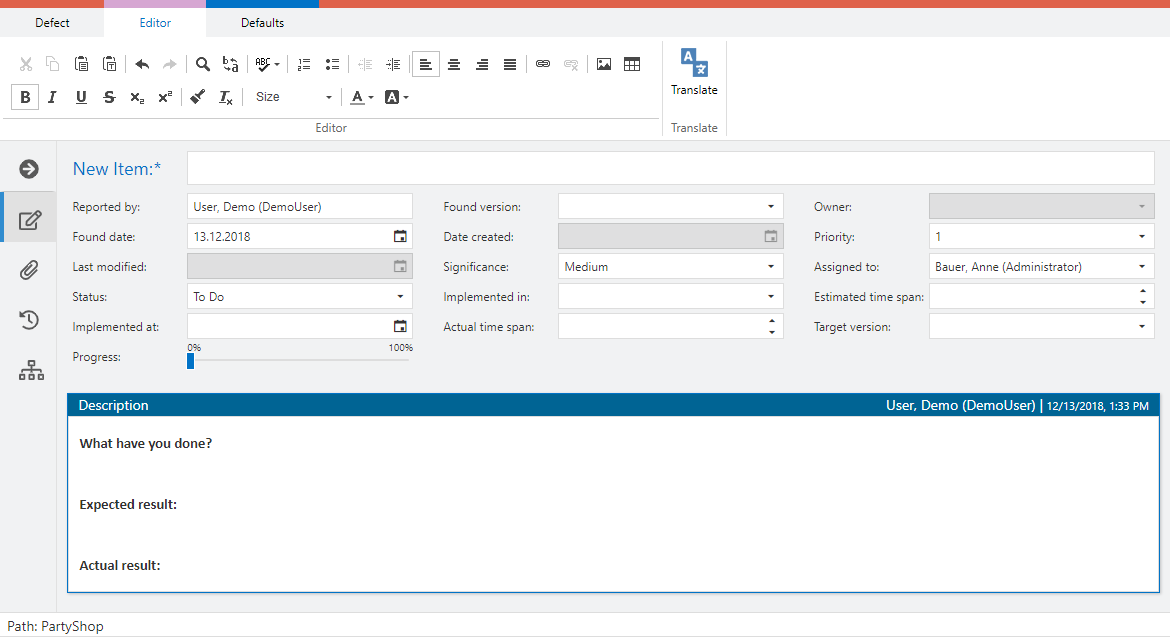Templates
You can define templates for new items, including text and field values. Thus, you can save time when creating new items.
To create a template first create a new item. Define your default values, e.g for 'assigned to' and 'significance', and the default text.

Now switch to the 'Defaults' tab. As an administrator you can save the template as project default or as your own default. Other users can only save defaults for themselves.

All new items with the same item type will now have the pre-selections as defined in the template.
Related Articles
Configuration of Email Templates
The content of email notifications can be configured in aqua. To do so, select your project in the project browser and click on the configuration menu in the upper left corner of the aqua header . In the project configuration area select the entry ...Workflow Limitations, Field Rules, Taking Over Field Values between Items and Templates
In the project configuration, you can use both workflow and field rules to set limitations on fields. Furthermore field values from selection fields with shared value sets and text fields can be set automatically when creating dependent items or ...Documents (Rich Client)
You can generate Word documents from aqua requirements. To do so, open a requirement and click 'Documents'. You can then generate a document by using a default template, or an own template. Defining own templates Templates need to be .rtf files. ...Creating a Report
The report is created based on the information within the currently selected project folder or subfolder. The list of available reports depends on the amount of templates stored within the current selected project. Report templates can be used in ...Execute reports with folder permissions
Since the report templates are project-specific and not folder-specific, permissions for reports can only be assigned for the entire project and not for specific folders. This means that a user who has a limited role on the project without ...